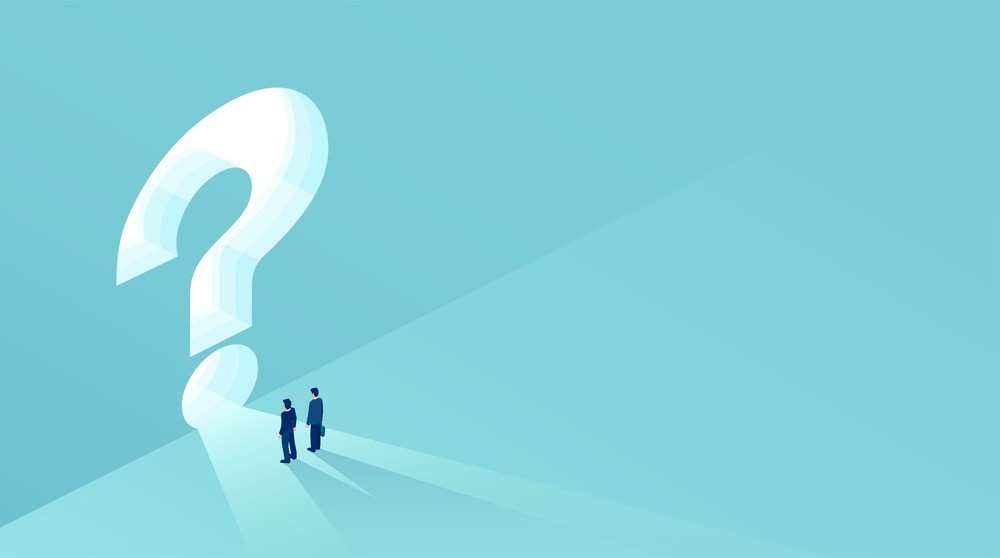Conversational AI — Addressing Customer Demand Shifts Accelerated by the Pandemic
If there’s one thing that people hate, it’s contacting a business or organization for support only to be put on hold or to get a busy signal. We’ve all been there, needing to get help to solve a problem with a product or service. You pick up the phone, and your worst expectations are realized: you wait on hold for an hour only to reach someone who forwards you to someone else. Eventually, you get to the right person, your problem or concern is resolved, but you swear never to do business with that company again. Poor service inevitably leads to lost customers, reduced sales, a sullied reputation, and damage to your brand. It’s bad enough when consumers must deal with this issue, but for business-to-business support, the lack of service can be catastrophic. Conversational AI is a powerful solution to this issue.
The pace of digital transformation, of which Conversational AI is a component, has picked up since the pandemic. According to a McKinsey & Company report titled, “These eight charts show how COVID-19 has changed B2B sales forever”, the pandemic forced many B2B buyers and sellers to digitally transform in a big way. The report points out that more than three-quarters of B2B buyers and sellers prefer digital self-service; this preference has continued even after the lockdowns reduced or ended. The report goes on to say that 70% of B2B decision-makers said they are open to making new purchases using self-serve or remote processes — even with large ticket items. This is a big shift from the past when e-commerce was considered useful for smaller items and face-to-face contact was needed for larger ticket purchases.
Conversational AI is a powerful tool to address this accelerated self-service demand. It can improve your ability to support your business partners, customers, employees, and others. Your support lines can be answered immediately by a friendly sounding human voice or an intelligent text-based chatbot who guides the caller to the right answer to their problem. The AI chatbot can give the correct solution without intervention from a human or it can engage a human when needed.
This technology is effective at any point people (consumers or business people) need to engage with your business. For example, you can use it to improve the customer journey, help your Human Resources team service employees, or provide first level support for your service desk. Further, businesses of all sizes are finding that Conversational AI allows them to shift staff to higher-value work or outright reduces their staffing requirements while still enabling access to exactly the right person to handle a customer’s problem.
In today’s pandemic-influenced world where personnel works remotely, customers order products and services online, and large office facilities are rapidly disappearing, this automated capability is powerful. In the past, customers or employees could walk into an office for help. Now, their preferred option is to pick up the phone or click a link on a website to be connected with someone who can help them.
Now that you understand the demand shift and impact potential of Conversational AI, what are the implications to businesses? Let’s look at this and other questions in the following sections.

Answering questions is the sweet spot for Conversational AI!
What is Conversational AI?
Imagine speaking or chatting with a skilled, knowledgeable, and friendly person who is available 24×7. That’s what Conversational AI can do for your customers and B2B business partners.
Conversational AI is an automated assistant that uses dialogue in either text or voice format to engage directly with people to help them get the service they need. These AI systems understand context so that they can provide answers and responses that are appropriate, to the point, and intelligent.
Websites often provide a link that users can click to receive help or support. This link opens a text-based chatbot that accepts questions and provides answers in textual format. With the advent of quality voice recognition and machine learning, voice based Conversational AI is becoming more common. Consumers, vendors, and others can call a phone number to talk directly to a realistic sounding artificial intelligence chatbot.
This technology, either text or voice based, automates conversations with customers, employees, vendors, partners, and even businesses (for B2B support) using natural language. As far as the caller is concerned, they are communicating directly with a real person because the answers they receive are appropriate for their question or concern. This allows people to ask questions, research answers to their problems, or achieve other goals such as applying for a job, scheduling a delivery, or finding out the status of a lost package.
Conversational AI technology automates the contact points for your business. Now let’s take a closer look at why this is important.
Why is Conversational AI Important?
Businesses who implement Conversational AI at strategic points along the customer journey gain advantage over the competition. Well-served customers are happy customers. Happy customers are repeat customers.
Conversational AI is crucial to businesses today. Using these systems, businesses can engage with their customers, vendors, partners, and stakeholders 24 hours a day, seven days a week, and even on holidays. This improves your customer journey, your support for vendors and partners, and your employee experience by delivering quality service regardless of the availability of staff. In fact, a well-designed Conversational AI solution can dramatically decrease the amount of staff needed to provide a high level of support.
Embedding Conversational AI systems throughout the customer journey improves the service you deliver to your customers. Recently, this technology was a significant differentiator for progressive companies who were early adopters. Now, this capability is a core and growing customer expectation. In fact, 30% of customers expect your site to include a live chat option and 3 out of 10 consumers prefer messaging over phone calls. Bottom line, the window for competitive advantage is closing as customer expectations shift. If you haven’t deployed yet, you need to move quickly to avoid customer dissatisfaction.
Like most technology, your Conversational AI solution must be fast — at least as fast as a human would be under the same circumstances. Consumers will not tolerate support that speaks to them slowly or takes too long to answer questions. They want answers and they want them now.
Not only is Conversational AI important for your business, but there are many rewards for these kinds of implementations.
What are the Rewards of Conversational AI?
Implementing Conversational AI creates lowered or reallocated staffing needs, satisfied customers, increased efficiency, and improved data capture capabilities that lead to a better understanding of customer habits and wants.
Well-designed Conversational AI plugged into the right touchpoints along your customer or vendor journey can dramatically improve their satisfaction by increasing your ability to provide good service, whether they be your customers, employees, vendors, partners, or anyone else that needs assistance.
Hosting your Conversational AI implementations in the cloud improves system reliability, fault tolerance, and disaster recoverability and safely maintains your data (this is your digital transformation treasure trove!) Most cloud-based services are run out of hardened facilities that are resistant to natural and man-made disasters. Using the cloud also reduces your IT staffing requirements since the cloud provider is responsible for hardware and operating system support.
Designing your Conversational AI systems with a data-to-everything strategy provides an opportunity to capture the data from Conversational AI and use it to better understand your consumers, their problems, their needs, and the solutions that are selected. By mining the data, you can learn what motivates your customers/vendors/partners to seek assistance, look for cross-selling and up-sell positioning opportunities, and identify patterns that will inform the creation of future products and services.
Additionally, by reviewing transcripts and surveys from chat sessions it’s possible to audit the level of service that they received from their Conversational AI sessions. You can answer questions such as: Were they satisfied? Did they receive the right answer? Did they receive a wrong answer but then were directed to the right answer? Did anyone hang up in the middle of the Conversational AI session, and if so, why did they do so? By conducting such audits, you learn how well your Conversational AI is creating value for your business, identify any additional opportunities to help, and correct any problems that occur.
Through mining the data, reviewing your data for insights, and surveying customers and other users, it’s possible to improve the services you deliver both via Conversational AI and other means. It is important, however, to be aware that since this information is based upon conversations, the analytics could be imprecise and potentially biased.
Although it’s clear that there are many areas of your business where Conversational AI can help, let’s look at a few of the options.
What are Ways to Use Conversational AI in Your Environment?
As outlined above, AI-enabled text chatbots and voice calls can dramatically improve the customer journey, keeping consumers engaged and happy with your brand. However, there are plenty of opportunities to use Conversational AI to improve other areas of the business, especially business-to-business communications. Some examples are explored below:
Employee kiosk. To better service, the needs of your employees, give them the option of engaging with a chatbot or voice system. By interfacing your employee databases with the Conversational AI system, they can look up their records, make minor changes to their information, and file reports. By doing this, you can reduce the burden on your human resources and payroll staff, as well as provide 24×7 support and quick response time.
Vendors. You can assist your vendors by implementing a Conversational AI system for them. Such a system could filter their messages and use machine learning to build an understanding of actions that could be done automatically. This will improve your supply chain by routing messages to the right people and taking care of routine requests and questions.
Inbound messages. Interface a chatbot with your email system and filter messages by subject and priority. By using machine learning and AI, the chatbot can respond to many messages without human intervention or forward them to the right people.
Monitor social media. Use Conversational AI to monitor social media channels. You can monitor for customer and employee complaints, reviews, and even posts about the competition. A social media chatbot can respond to any relevant posts appropriately. The chatbot can offer a coupon to a complaining customer or suggest that an upset employee seek out HR for help. For posts about competing products, the chatbot can either forward them to a human for a response or add a comment suggesting your product or service.
Service desk support. You can use Conversational AI to automate your help or service desks. This gives customers better support for their product or service inquires, for example. You can also cover the internal IT help desk to support common issues that users run into throughout the day.
These are just a few examples of how you can implement Conversational AI to provide better and faster service to your customers, employees, vendors, and partners. Consider this technology for use whenever people — B2C or B2B — need to contact your business.
But what if you choose not to implement Conversational AI? What are the risks associated with delaying?

What are the Risks of Not Pursuing this Technology?
Your competitors are embedding Conversational AI throughout their customer journey. If you haven’t deployed it already, implement it now to maintain your market share and ensure your customers keep coming back.
Conversational AI is a relatively new technology. As is true with anything new, there are unknowns. The impact on the business culture, organization, individuals, and even society in general is difficult to predict. Leaders experience fear of these unknowns and are cautious about using AI in mission-critical processes and procedures. Having the vision and courage to pursue new technology solutions, like Conversational AI, assures that customers, partners, and vendors are happy, and employees are fully engaged.
The pandemic resulted in the downsizing of many organizations including their various support groups. Instead of implementing Conversational AI, some of these businesses elected to allow long hold times and busy signals. As a result, customers shifted their attention to those companies that gave better service, and vendors and partners sought alternative collaborators. Implementing Conversational AI would have provided more positive customer experiences, improved vendor/supplier support, and done so using a reduced staff.
Just as with the introduction of any new high impact technology, be aware that Conversational AI does have implications for your business culture. What should you consider regarding your employees and others?
What are the Implications to Business Culture?
Expect disruption in the workplace as you implement Conversational AI. Employees will be nervous about the impacts on their careers and jobs. Use good communication to ensure they remain engaged and want to aid in a successful transformation.
Your staff will be wary as you implement digital transformation throughout your organization, including components such as Conversational AI. Employees, managers, contractors, and other stakeholders will feel varying degrees of fear and trepidation. This is reasonable as their professional and personal well-being is directly tied to what happens in their work. To aid your transformation success, everyone involved must share your vision. The best policy is to be transparent about the forces driving your transformation, the expected results, areas where there might be a pain, and the effects that it will have on the business and staff.
Typically, all Conversational AI conversations and chat sessions are recorded (this data captured is critical to your overall digital transformation so commit to storing this information). Ensure that you follow any legal requirements such as notifying the caller about the recording and how it will be used. HIPPA and other regulations may require added procedures as well. Brief your staff to ensure that they feel comfortable with the fact that their conversations will not be private.
Employees and stakeholders will be filled with questions — be ready with the answers. What will be the effect on my job? Career? Will employees be retrained? Transferred? Is downsizing expected? How will the company help those who will be affected by new technologies? Brief your team regularly on these and other issues to create psychological safety for them.
Your organization will be impacted by your implementations of Conversational AI. How will this technology effect your business and how can you prepare for the changes?
What are the Organizational Implications?
Remember the people in your organization! Create excitement for growth potential created by your Conversational AI implementation.
Conversational AI technology will impact your organization in a multitude of ways. You can expect reduced staffing requirements for customer journey support functions and in any function that is specifically addressed with your deployed AI solution. This creates opportunities for career change and growth. Focus on retraining and transfers to created growth areas will ensure that staff remains positive and engaged.
If done properly, leadership will be able to drill into the data captured with your Conversational AI with a multitude of visualizations, apply machine learning, and begin predicting and prescribing behaviors. You will better understand why people call, how they interact with your company, what they expect, and how they were helped along the way. Be prepared to redesign your organizational structure, add roles, adjust processes, and expand/change product offerings based upon these learnings.
This technology is not an isolated, siloed application. It interfaces with and effects many different parts of the organization. Your IT department will likely support the application itself and manage the data environment. Groups including customer service, marketing, supply chain, sales, etc. need to understand how they can use Conversational AI to improve their team’s ability to serve the enterprise’s mission. Those in leadership roles must be willing to educate themselves, handle disruptions, and continually adjust roles and processes to maximize the value of this new capability.
What Needs to be Done Now?
Identify the areas within workflows and processes where you can create the biggest impact with Conversational AI.
Conversational AI is a critical component of your digital transformation efforts. It can dramatically improve the service you deliver to your customers, thus, improving your bottom line. The return on investment can be significant but be prepared to undertake a comprehensive learning and adjustment journey.
Educate yourself and your staff to understand how Conversational AI can help, its strengths, and its limitations. Learn how it fits with the other systems in your business. Does your Conversational AI need to interface with the ERP, CRM, and other external systems? How will the data be used? What kind of data visualizations are needed and is that best accomplished with structured or unstructured data? What possibilities exist if you visualize data in real-time? Are you prepared to deal with petabytes of data?
Once educated, carefully examine the touchpoints within your customer or vendor journey to determine those areas where you can create the biggest impact with such an automated solution — these are the initial targets for your first implementations. Remember touchpoints involving vendors, partners, and other stakeholders as additional possible AI opportunities. Ensure that your staff understands their role, the impact that the technology will have on their careers and commit to providing resources that support their success.
Take extra care when implementing Conversational AI because these systems deal directly with people who are highly valuable to your organization. Test the systems thoroughly and ensure that you have well designed and rehearsed fallback plans. Poor execution of your new Conversational AI solution would inconvenience the very people that you’re intending to better serve and inject dissatisfaction risk.
If you haven’t implemented Conversational AI yet, you’re missing a significant opportunity to provide better service, reallocate staff to higher-value activities, and capture data critical to your overall digital transformation. If you’ve already rolled it out, kudos to you! Now, invest the time to adjust your organization (odds are that you aren’t maximizing value yet) and consider expanding into other areas where automation can drive improved customer/vendor/partner experience.
Do it now! Include Conversational AI in your digital transformation plans to begin reaping the benefits of this exciting and powerful technology.








